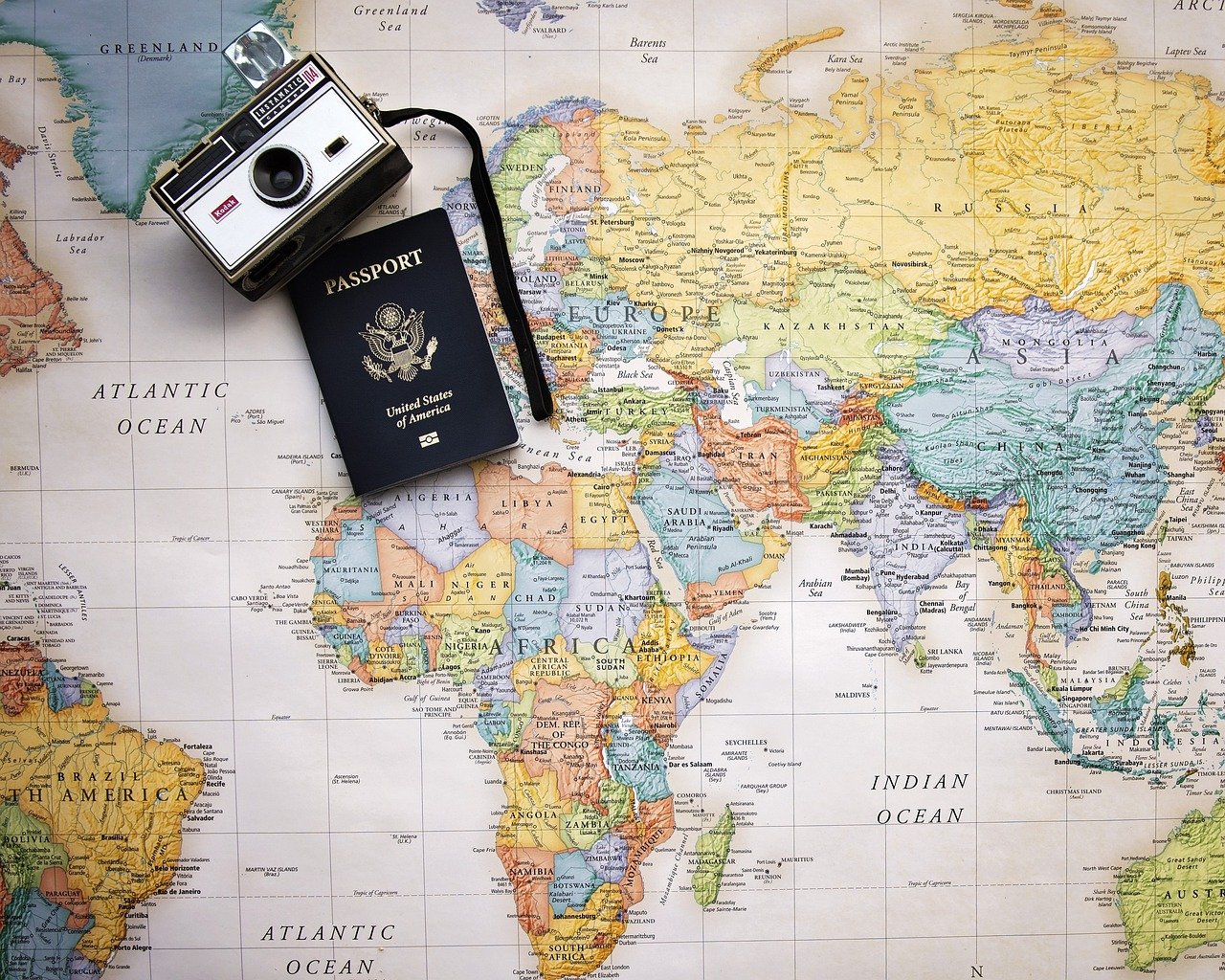This Article has been revised, edited and added to, by Poulomi Chakraborty.
- Understanding and Tapping into the Unique Demands of the Travel Audience
- The Travel Audience Persona
- Psychographic Profiling
- Journey Mapping
- Seasonal and Trend-based Content
- Integrating Behavioral Analytics for Enhanced Personalization
- Leveraging Sentiment Analysis to Understand Emotional Drivers
- Predictive Analytics for Anticipating Future Travel Trends
- Crafting a Future-Ready Content Strategy
- Crafting Content that Resonates
- Storytelling – The Heart of Travel Content
- SEO-optimized Content
- Local SEO – The Untapped Goldmine
- Leveraging User-Generated Content
- Building Emotional Bridges with Authenticity and Empathy
- Unlocking the Potential of Interactive Storytelling
- Providing Actionable Insights with Every Piece of Content
- The Art of Meaningful Content Creation
- Leveraging Multimedia Elements to Enrich the Travel Narrative
- Visual Storytelling – Painting Pictures with Words and Images
- Video Content – The Dynamic Storyteller
- Virtual Reality (VR) – The Future of Travel Exploration
- Podcasts – The Travel Companion
- Crafting Immersive Experiences with Augmented Reality
- Utilizing 360-Degree Videos for Virtual Explorations
- Amplifying Engagement with Interactive Infographics
- Revolutionizing Travel Content with Multimedia
- Navigating the Dynamic World of Social Media
- Building Communities – The Heartbeat of Travel Narratives
- User Engagement – The Pulse of Social Media
- Content Amplification – Magnifying the Reach
- Monitoring and Analytics – The Compass Guiding the Strategy
- Embracing the Power of Live Streaming to Connect in Real-Time
- Utilizing User-Generated Content to Foster Community and Authenticity
- Harnessing the Potential of Social Media Analytics for Data-Driven Decisions
- Crafting a Distinctive Social Media Presence in Travel
- Strategically Aligning SEO and Engagement for Maximum Impact
- Conclusion
In the rapidly evolving digital landscape, the travel industry stands as a vibrant space pulsating with opportunities and avenues for growth. For travel businesses aspiring to carve a niche in the digital space, harnessing the power of SEO through a well-articulated content strategy is no longer a choice but a necessity.
At the intersection of creativity and strategy, a well-rounded content strategy emerges, promising a pathway that navigates through engaging narratives, vibrant visuals, and user-centric experiences. Leveraging SEO in this space means going beyond keywords to craft experiences that resonate with the audience’s aspirations, interests, and desires.
As we stand at the threshold of this rich exploration spanning 7000 words, we endeavor to craft a roadmap that unveils the intricacies of developing a content strategy finely tuned for the SEO landscape in the travel industry. Through a tapestry woven with real-life case studies, expert insights, and actionable strategies, this guide promises to be a vibrant journey through the fundamentals and beyond, nurturing a space rich with insights and knowledge.
In the forthcoming sections, we will delve deep into various facets such as understanding the unique demands of the travel audience, crafting content that resonates, leveraging multimedia elements, and so much more. Each chapter will add a new dimension to our understanding, promising a narrative rich with depth and nuances.
Understanding and Tapping into the Unique Demands of the Travel Audience

In the realm of travel SEO, tapping into the unique demands of your audience requires more than just understanding their demographics or travel preferences. It involves a multi-layered approach that leverages advanced analytical tools and techniques to uncover deeper insights into their behavior, needs, and engagement patterns. This nuanced understanding enables travel businesses to craft content that not only resonates on a personal level but also anticipates and addresses the evolving needs of their audience.
The Travel Audience Persona
Before weaving a content strategy that resonates, it is pivotal to understand the diverse personas that encompass the travel audience. From the solo travelers seeking adventures to families seeking leisure, crafting content that speaks to varied personas is the key.
- Solo Travelers: Uncovering the desires and apprehensions of solo travelers.
- Family Travelers: Crafting narratives that cater to family units.
- Luxury Travelers: Tuning into the aspirations of luxury seekers.
- Budget Travelers: Addressing the concerns and needs of budget-conscious travelers.
Psychographic Profiling
Diving deep into the psychographic profiling allows us to craft content that resonates with the audience’s intrinsic motivations and desires. Understanding their lifestyle, values, and attitudes can forge a deeper connection.
- Lifestyle Understanding: Weaving content that resonates with different lifestyle choices.
- Value Resonance: Crafting narratives that align with the audience’s core values.
Journey Mapping
Embarking on the journey mapping process allows us to craft content that resonates with different phases of the travel planning process, nurturing a space rich with insights and guidance.
- Inspiration Phase: Crafting content that fuels the wanderlust.
- Planning Phase: Guiding prospective travelers in the planning phase with rich insights.
Seasonal and Trend-based Content
Tapping into seasonal narratives and trending topics can foster a space that resonates with the dynamic demands of the travel audience.
- Seasonal Guides: Crafting guides that help travelers navigate seasonal nuances.
- Trend Responsiveness: Being responsive to the trending topics in the travel sphere.
Integrating Behavioral Analytics for Enhanced Personalization
Behavioral analytics stand at the forefront of this deepened understanding. By analyzing the digital footprints left by your audience, such as the pages they visit, the content they engage with the most, and their navigation paths on your site, you can uncover invaluable insights into their preferences and pain points.
This data-driven approach allows for the creation of highly personalized content strategies that cater to the specific interests and needs of different traveler personas, thereby enhancing engagement and conversion rates.
To implement this, start by integrating comprehensive analytics tools into your website and social media platforms. Monitor user interactions closely and segment your audience based on their behavior patterns. Use this segmentation to tailor your content, offers, and messages, ensuring that each piece of content speaks directly to the interests and needs of its intended audience segment.
Leveraging Sentiment Analysis to Understand Emotional Drivers
Sentiment analysis, powered by AI and natural language processing technologies, offers another layer of insight into the unique demands of the travel audience. By analyzing the emotional tone behind social media posts, reviews, and comments related to travel experiences, destinations, and services, businesses can gain a deeper understanding of the emotional drivers and barriers for their audience.
Applying sentiment analysis can help in identifying emerging trends, understanding the impact of current events on travel sentiments, and tailoring content to address or harness these sentiments.
For instance, if there is a growing trend of concern about sustainability in travel, your content strategy could pivot to highlight eco-friendly travel options, conservation efforts at destinations, and how your business supports sustainable tourism practices.
Predictive Analytics for Anticipating Future Travel Trends
Predictive analytics takes the understanding of the travel audience a step further by using historical data and AI algorithms to forecast future behavior and preferences. This proactive approach enables businesses to stay ahead of the curve, developing content that addresses emerging trends, destinations, and traveler concerns before they become mainstream.
Incorporate predictive analytics into your strategy by analyzing patterns in booking behaviors, destination popularity, and customer feedback over time. Use these insights to anticipate shifts in travel interests and preferences, allowing you to adjust your content strategy accordingly.
For example, if data suggests a growing interest in remote, off-the-beaten-path destinations, you can begin crafting detailed guides, stories, and visual content that cater to this emerging preference, positioning your business as a forward-thinking leader in the travel industry.
Crafting a Future-Ready Content Strategy
The dynamic nature of the travel industry, compounded by the evolving demands of the travel audience, calls for a sophisticated, insights-driven approach to content strategy.
By integrating behavioral analytics, sentiment analysis, and predictive analytics into your content planning process, you can develop a strategy that not only meets the current needs of your audience but also anticipates future trends and preferences.
This proactive, data-driven approach ensures that your content remains relevant, engaging, and effective in attracting and retaining travelers, setting the foundation for sustained growth and success in the competitive landscape of travel SEO.
Crafting Content that Resonates

In the fiercely competitive travel industry, creating content that resonates requires a strategic approach that transcends conventional storytelling and SEO practices. It’s about fostering an emotional connection with your audience, leveraging the power of interactive storytelling, and providing value that extends beyond the ordinary. For startup founders, the key lies in crafting narratives that not only inform and entertain but also engage and inspire action.
Storytelling – The Heart of Travel Content
In the realm of travel, stories hold a special place. It’s not just about the destinations but the experiences, the stories of locals, and the hidden tales that the places hold. Here, we delve into how to:
- Narrative Crafting: Building narratives that are rich and immersive, offering a fresh perspective on destinations.
- Personal Stories: Encouraging users to share their personal travel stories, fostering a community of travel enthusiasts.
SEO-optimized Content
While rich narratives form the essence, SEO remains the backbone ensuring visibility. This section illuminates the pathways to:
- Keyword Research: Deep diving into the nuances of keyword research specific to the travel industry.
- Content Structuring: Structuring content to align with SEO guidelines, without compromising the narrative flow.
Local SEO – The Untapped Goldmine
For travel content, focusing on local SEO can unveil opportunities less explored, including:
- Local Guides: Creating in-depth local guides that offer insights beyond the popular tourist spots.
- Community Engagement: Engaging with local communities to bring forth untold stories and experiences.
Leveraging User-Generated Content
User-generated content stands as a testament to the experiences your service offers. Learn how to:
- Encourage Reviews and Testimonials: Building strategies to encourage users to leave reviews and share experiences.
- Content Curation: Curating user-generated content to build a narrative that’s both diverse and authentic.
Building Emotional Bridges with Authenticity and Empathy
The foundation of resonant content lies in its authenticity and the emotional bridges it builds with the audience. Authentic storytelling involves sharing real experiences, challenges, and success stories from both the brand’s perspective and the travelers themselves.
Empathy plays a crucial role here; it’s about understanding and reflecting the emotional journey that travelers undergo, from the initial excitement of choosing a destination to the satisfaction of a trip that meets or exceeds expectations.
To implement this, consider creating content that showcases behind-the-scenes insights into your travel services, customer testimonials that highlight personal growth or transformation, and destination stories that focus on the local community’s perspective.
This approach not only enhances the relatability of your content but also strengthens trust with your audience, as they see your brand valuing honesty and human connection.
Unlocking the Potential of Interactive Storytelling
Interactive storytelling represents a leap in how content can captivate and engage the travel audience. By integrating elements that allow for user interaction—such as clickable maps, 360-degree videos, and interactive timelines—travel brands can transform passive content consumption into an active, engaging experience.
This not only boosts engagement rates but also increases the memorability of the content, as users are more likely to recall content that they interacted with actively.
Startups can leverage interactive storytelling by incorporating quizzes that help users discover their next destination, interactive infographics that detail travel stats and facts, or virtual reality tours that allow users to explore destinations before visiting.
These innovative content formats not only serve to entertain but also provide practical value to the audience, positioning your brand as a cutting-edge leader in the travel industry.
Providing Actionable Insights with Every Piece of Content
Beyond emotional engagement and interactive experiences, the content must also deliver tangible value through actionable insights. This involves not just inspiring the audience to travel but also empowering them with the knowledge and tools they need to plan and enjoy their trips fully.
Content that resonates on this level addresses the audience’s pain points and challenges, providing solutions and recommendations that are both practical and inspiring.
Incorporate this principle by creating content that offers clear, actionable travel tips, destination guides that include not-to-miss experiences and how to navigate them, and practical advice on getting the best deals, packing effectively, and ensuring safety while traveling.
Ensure that each piece of content has a clear takeaway or action step that the reader can apply, enhancing the value of your content and encouraging deeper engagement with your brand.
The Art of Meaningful Content Creation
For startups in the travel industry, developing a content strategy that resonates deeply with the audience is a critical path to differentiation and growth.
By focusing on building emotional connections through authenticity and empathy, embracing the possibilities of interactive storytelling, and ensuring that every piece of content provides actionable value, brands can craft compelling narratives that not only rank well in search engines but also win the hearts and minds of travelers.
This holistic approach to content creation fosters a loyal community of followers, drives engagement, and positions your brand as a trusted advisor in the travel journey.

Related: Check out our free SEO suite

Leveraging Multimedia Elements to Enrich the Travel Narrative
In today’s digital age, leveraging multimedia elements to enrich the travel narrative is not just about adding visual or auditory stimuli; it’s about creating a holistic, immersive experience that captivates and educates your audience.
For startup founders, this means adopting a strategic approach to multimedia usage, where each element serves a purpose beyond mere decoration, acting as a pivotal component of the storytelling process.
This approach involves embracing new technologies, understanding the power of interactive media, and integrating multimedia in a way that complements and amplifies the core message of your content.
Visual Storytelling – Painting Pictures with Words and Images
In the world of travel, a picture is indeed worth a thousand words. However, marrying imagery with evocative storytelling can create a tapestry that’s both rich and inviting. Here, we delve into strategies such as:
- Photo Essays: Crafting photo essays that tell a rich narrative through a series of captivating images.
- Infographics: Leveraging infographics to present data in a visually appealing and digestible manner.
Video Content – The Dynamic Storyteller
Videos hold the power to transcend borders and transport viewers to destinations afar. In this segment, we unearth:
- Vlog Content: Encouraging travel enthusiasts to share vlogs, offering a personal glimpse into various travel destinations.
- Tutorial Videos: Crafting tutorial videos that guide novice travelers through various aspects of travel planning.
Virtual Reality (VR) – The Future of Travel Exploration

Venturing into the futuristic landscape of VR, we explore how it can redefine travel exploration:
- Virtual Tours: Creating virtual tours that offer a 360-degree view of destinations, providing an immersive experience.
- Interactive Experiences: Designing interactive experiences that allow users to explore destinations in a gamified manner.
Podcasts – The Travel Companion
In the auditory realm, podcasts emerge as a companion to travelers, offering narratives that are both enriching and immersive. This section explores:
- Interview Series: Hosting a series of interviews with travel experts sharing their insights and experiences.
- Storytelling Podcasts: Crafting podcasts that narrate the rich tales and histories of various destinations.
Crafting Immersive Experiences with Augmented Reality
Augmented Reality (AR) offers a groundbreaking way to bring travel content to life, allowing users to immerse themselves in destinations before they even book their trip. By overlaying digital information onto the real world, AR can transform a standard article or guide into an interactive experience.
For instance, imagine pointing your smartphone at a printed travel brochure and watching as it comes to life with videos, animations, and 3D models of landmarks.
Startup founders can leverage AR by creating apps or features that allow users to explore destinations through their devices. This could include AR walking tours, where historical facts and tourist information are displayed over the live view of a city street, or interactive maps that reveal hidden gems and stories when viewed through an AR lens. Such innovative use of AR not only engages users in a novel way but also sets your brand apart as a leader in digital travel experiences.
Utilizing 360-Degree Videos for Virtual Explorations
360-degree videos offer another avenue for deepening the travel narrative, allowing viewers to control their perspective and explore every angle of a destination as if they were there.
This format is particularly effective for showcasing landscapes, properties, and attractions, offering a panoramic view that photos and traditional videos cannot match.
Integrating 360-degree videos into your content strategy can be as simple as adding virtual tours of popular destinations or as complex as creating interactive, choose-your-own-adventure experiences where viewers decide where to go next.
For startups, this means investing in 360-degree video technology and training, or partnering with creators who specialize in this format, to produce content that truly stands out.
Amplifying Engagement with Interactive Infographics
Interactive infographics represent a fusion of data and design, presenting complex information in an engaging, visually appealing manner. In the context of travel content, they can be used to convey statistics, trends, and comparisons that might otherwise be dry or difficult to digest.
Startups can create interactive infographics that allow users to explore data related to travel destinations, such as the cost of living, weather patterns, or tourist foot traffic throughout the year.
By making the data interactive, users can customize the information to their interests, whether that’s comparing the affordability of destinations or understanding the best time to visit based on weather and crowd data. This not only makes your content more engaging but also more useful, as it empowers readers to make informed decisions about their travel plans.
Revolutionizing Travel Content with Multimedia
For travel startups, the strategic integration of multimedia elements represents a powerful opportunity to revolutionize how travel content is created and consumed. By embracing technologies like AR, exploring immersive formats like 360-degree videos, and enhancing data presentation through interactive infographics, startups can craft content that not only ranks well in SEO but also truly resonates with the modern traveler.
This approach not only enriches the travel narrative but also positions your brand as an innovative leader in the travel industry, capable of meeting and exceeding the evolving expectations of your audience.
Navigating the Dynamic World of Social Media

In the dynamic world of social media, mastering the art of storytelling is essential for travel brands looking to connect with their audience on a deeper level. For startup founders, this means moving beyond mere promotional content to share stories that inspire, inform, and engage. Crafting a social media presence that resonates with the wanderlust inherent in all travelers requires a blend of creativity, strategic planning, and genuine engagement.
Building Communities – The Heartbeat of Travel Narratives
Social media offers a vibrant space to foster communities of like-minded travel enthusiasts. In this section, we explore pathways to:
- Forum Discussions: Encouraging discussions in travel forums to foster a space of shared experiences and advice.
- Collaborative Content: Leveraging collaborations with travel influencers to enhance the reach and authenticity of the content.
User Engagement – The Pulse of Social Media
Engaging users is the essence of a vibrant social media strategy. Here, we delve into tactics such as:
- Interactive Content: Crafting quizzes, polls, and interactive content to foster engagement.
- Live Sessions: Hosting live sessions to engage with the audience in real-time, answering their queries, and sharing insights.
Content Amplification – Magnifying the Reach
To ensure that the rich narratives reach the right audience, we delve into strategies for content amplification, including:
- SEO for Social Media: Unveiling the lesser-known SEO strategies applicable to social media platforms.
- Content Syndication: Leveraging content syndication to amplify the reach of the content across platforms.
Monitoring and Analytics – The Compass Guiding the Strategy
Understanding the performance of the strategy is vital to steer it in the right direction. This section focuses on:
- Analytics Tools: Unveiling the analytics tools that help monitor the performance on social media.
- Responsive Strategy: Crafting a strategy that’s responsive to the insights derived from analytics, fine-tuning the approach based on performance metrics.
Embracing the Power of Live Streaming to Connect in Real-Time
Live streaming on social media platforms offers a unique opportunity to connect with your audience in real time, providing a raw and unfiltered glimpse into the travel experiences you offer.
Whether it’s a live tour of a new destination, a Q&A session with travel experts, or behind-the-scenes looks at local events, live streaming can create a sense of immediacy and exclusivity that pre-recorded content cannot match.
For startups, incorporating live streaming into your social media strategy can help humanize your brand, allowing you to interact directly with your audience, answer their questions in real time, and respond to their feedback.
This direct engagement not only strengthens the relationship with your followers but also boosts your content’s visibility through increased likes, comments, and shares.
Utilizing User-Generated Content to Foster Community and Authenticity
User-generated content (UGC) is a powerful tool for travel brands, as it showcases real experiences from real travelers, offering authenticity and relatability that brand-created content often lacks.
Encouraging your audience to share their travel photos, videos, and stories not only provides you with a wealth of authentic content to repurpose on your own channels but also fosters a sense of community among your followers.
To leverage UGC effectively, create campaigns or hashtags that inspire your audience to share their travel experiences related to your brand. Showcase this content prominently on your social media platforms, and remember to give credit to the original creators.
This approach not only enriches your content mix but also incentivizes further engagement and content creation from your audience.
Harnessing the Potential of Social Media Analytics for Data-Driven Decisions
In the ever-changing landscape of social media, analytics play a crucial role in guiding your content strategy. By closely monitoring the performance of your posts, identifying trends in engagement, and understanding the demographics of your audience, you can make informed decisions about the type of content that resonates most.
Startups should invest in social media analytics tools to track key metrics such as reach, engagement rate, follower growth, and conversions. Use this data to refine your content strategy, focusing on what works and pivoting away from what doesn’t.
This continuous process of analysis and adjustment ensures that your social media efforts are always aligned with your audience’s interests and preferences.
Crafting a Distinctive Social Media Presence in Travel
Navigating the dynamic world of social media requires travel startups to be creative, strategic, and responsive. By embracing live streaming, encouraging user-generated content, and harnessing the power of analytics, startups can craft a social media presence that not only stands out but also truly resonates with the travel community.
This approach not only strengthens your brand’s online visibility but also builds a loyal and engaged following, setting the foundation for long-term success in the competitive travel industry.
Strategically Aligning SEO and Engagement for Maximum Impact

In the intricate dance of digital marketing, particularly within the travel industry, the harmonization of SEO optimization and user engagement forms the cornerstone of a successful content strategy. For startup founders, the challenge and opportunity lie in crafting a content approach that not only ticks the boxes of search engine algorithms but also resonates on a human level, compelling readers to interact, share, and return. This section delves into the strategies for intertwining SEO with engaging content, creating a symbiotic relationship that drives visibility and connects with the audience.
Crafting Content That Serves Dual Purposes
At the heart of a balanced content strategy is the creation of content that serves both the search engines and the human audience. This dual-purpose content must be meticulously researched and thoughtfully presented, weaving together keyword-rich narratives with compelling storytelling that captivates the reader.
To achieve this, begin with in-depth keyword research focused on long-tail keywords and questions that potential travelers are asking. These insights should then be used to inform the creation of content that answers these questions in a detailed, engaging manner. For example, a comprehensive guide on “How to Spend a Week in Paris” that includes personal anecdotes, local secrets, and immersive storytelling will not only rank well for relevant keywords but also engage readers and encourage them to spend longer on your site.
Leveraging Data-Driven Insights for Content Personalization
The power of data cannot be overstated when it comes to crafting a content strategy that speaks directly to your audience’s needs and interests. By analyzing user behavior, preferences, and engagement metrics, startups can tailor their content to match the specific desires of their audience segments.
Implement advanced analytics tools to gather data on how different pieces of content perform across various demographics and user segments. Use this information to personalize content offerings, ensuring that each piece speaks to the interests, challenges, and aspirations of its intended audience. Personalized content not only improves user engagement rates but also enhances the overall SEO performance by increasing time spent on site and reducing bounce rates.
Integrating Multimedia Elements for Enhanced SEO and User Experience
Multimedia elements such as images, videos, and interactive infographics play a crucial role in both engaging users and improving SEO rankings. Search engines favor content that provides a rich user experience, signaling that your site is a valuable resource. Additionally, multimedia elements can increase the shareability of your content, further amplifying its reach and impact.
To integrate multimedia effectively, ensure that all images and videos are optimized for web use, with appropriate tags and descriptive filenames. Consider creating interactive elements that encourage user engagement, such as quizzes or interactive maps, which can significantly increase time on page. Remember, each multimedia element should enhance the narrative and provide value, rather than serving as mere decoration.
Crafting a Confluence of SEO and Engagement
The art of developing a content strategy for travel SEO lies in striking the perfect balance between search engine optimization and genuine user engagement. By crafting content that serves dual purposes, leveraging data for personalization, and enriching narratives with multimedia elements, startups can create a robust content ecosystem.
This ecosystem not only ranks well in search engine results but also deeply resonates with travelers, inspiring them to explore further, engage more deeply, and ultimately, choose your brand for their travel needs. In this ever-evolving digital landscape, the confluence of SEO and engagement paves the way for meaningful connections, sustained growth, and competitive advantage in the travel industry.
Conclusion
The journey through developing a content strategy for travel SEO is both comprehensive and nuanced, requiring a delicate balance of technical savvy, creative storytelling, and deep audience understanding. In navigating this landscape, startups must focus on creating content that not only adheres to SEO best practices but also genuinely resonates with their audience, providing value, inspiration, and actionable insights.
By integrating advanced analytical insights, leveraging multimedia elements, embracing the dynamic world of social media, and harmonizing SEO with user engagement, brands can weave a rich tapestry of content that captivates travelers and guides them through their journey.
This strategic approach not only enhances online visibility and drives traffic but also builds a loyal community of engaged users, setting the foundation for long-term success in the competitive travel industry. In the end, the art of crafting an effective content strategy lies in its ability to tell compelling stories that inspire action, backed by the precision of SEO to ensure those stories find their audience.
Read Next





















